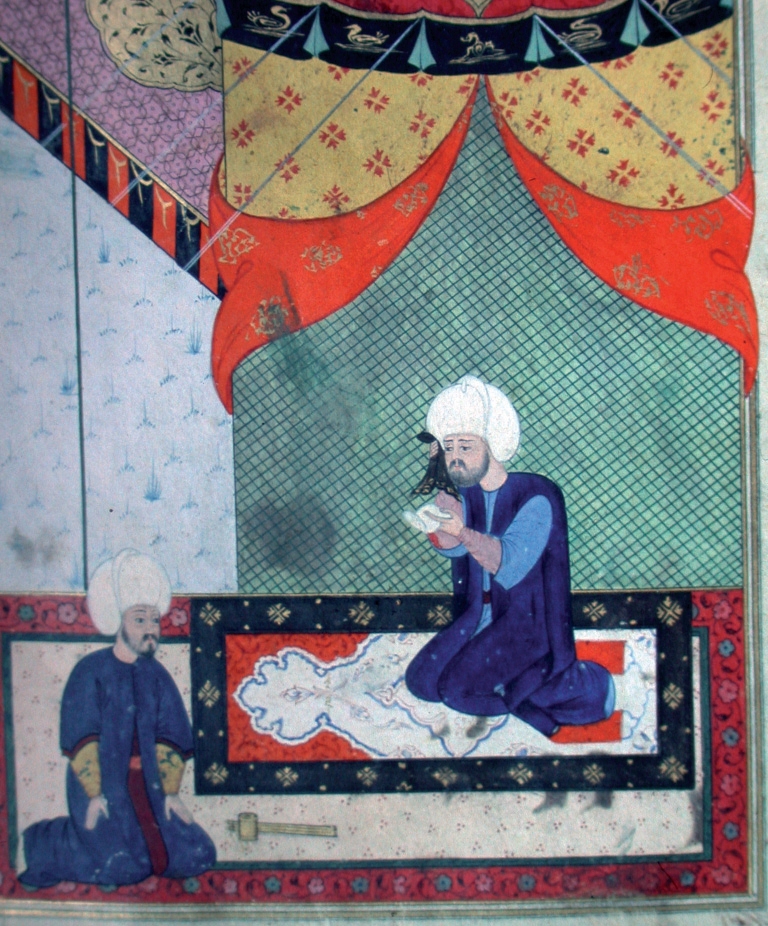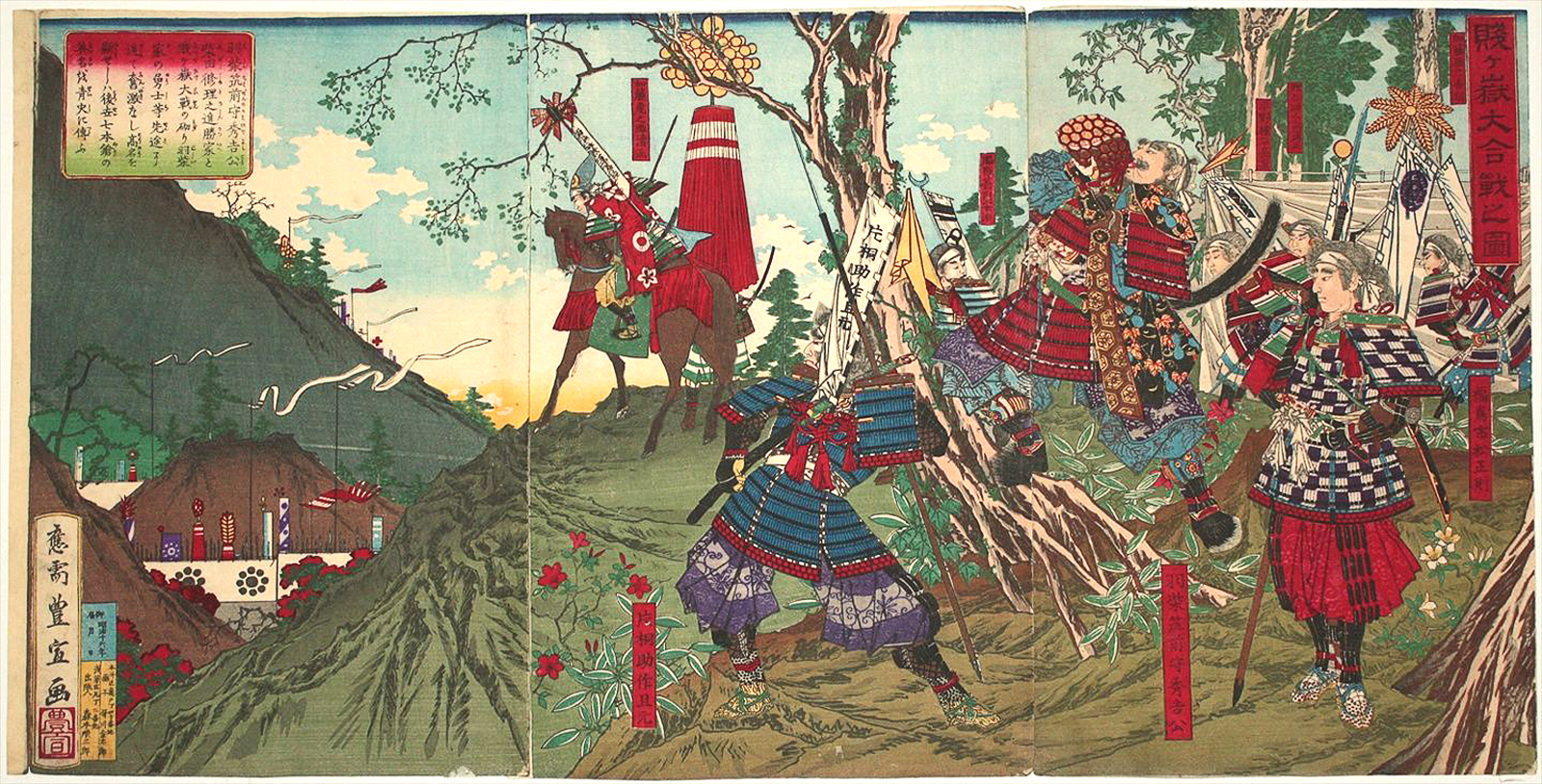|
Feridun Ahmed Bey
Feridun Ahmed Bey (died 16 March 1583) was an Ottoman official, bureaucrat, writer and military officer, best known for his service in the government of Grand Vizier Sokollu Mehmed Pasha (1565–1579). He was the second husband of Ayşe Hümaşah Sultan, granddaughter of Sultan Suleiman the Magnificent. The ''Münșeâtu's-Selâtin'' is his most important work, a two-volume compilation going back to early Islamic periods. According to Selcuk Aksin Somel, this work is "crucial for the study of early and classical periods of Ottoman history". Biography Feridun Ahmed Bey's date of birth is unknown. According to his own writings, he was born to a certain Abdülkadır (ʿAbd al-Qādir). Feridun Ahmed Bey was probably of ''devshirme'' origin. He was a protégé of Sokollu Mehmed Pasha and was reputable at the Siege of Szigetvár in 1566. He served as secretary of state (''Reis ül-Küttab'') from 1570 to 1573, and as chancellor (''Nişancı'') from 1573 to 1576. Following the ascension ... [...More Info...] [...Related Items...] OR: [Wikipedia] [Google] [Baidu] |
Sokollu Mehmed Pasha And Feridun Ahmed Beg
Sokollu (Serbo-Croatian and Bosnian: Sokolović) is a prominent Bosnian family of Serbian ethnic origin.Kočan, Ismet (Dec. 21, 2005)Mit i stvarnost - Mehmed-paša Sokolović Večernje Novosti Online. Notable members of the family were high state officials in the Ottoman Empire during the 16th century. Prominent members include Sokollu Mehmed Pasha, Ferhad Pasha Sokolović, Makarije Sokolović, and Savatije Sokolović. See also *Sokolović Sokolović ( sr-Cyrl, Соколовић, may also be transliterated as Sokolovic or Sokolovich) is a South Slavic surname. It derives from the Slavic word ''sokol'', meaning "falcon" and literally means "son of the falcon". The Sokolović of the ... References Surnames {{Ottoman-stub ... [...More Info...] [...Related Items...] OR: [Wikipedia] [Google] [Baidu] |
Sanjak-bey
''Sanjak-bey'', ''sanjaq-bey'' or ''-beg'' () was the title given in the Ottoman Empire to a bey (a high-ranking officer, but usually not a pasha) appointed to the military and administrative command of a district (''sanjak'', in Arabic '' liwa’''), hence the equivalent Arabic title of ''amir liwa'' ( ) He was answerable to a superior ''wāli'' or another provincial governor. In a few cases the ''sanjak-bey'' was himself directly answerable to the sultan in Constantinople. Like other early Ottoman administrative offices, the ''sanjak-bey'' had a military origin: the term ''sanjak'' (and ''liva'') means "flag" or "standard" and denoted the insigne around which, in times of war, the cavalrymen holding fiefs (''timars'' or '' ziamets'') in the specific district gathered. The ''sanjakbey'' was in turn subordinate to a ''beylerbey'' ("bey of beys") who governed an ''eyalet'' and commanded his subordinate ''sanjak-beys'' in war. In this way, the structure of command on the battlefield ... [...More Info...] [...Related Items...] OR: [Wikipedia] [Google] [Baidu] |
16th-century Civil Servants From The Ottoman Empire
The 16th century began with the Julian year 1501 (represented by the Roman numerals MDI) and ended with either the Julian or the Gregorian year 1600 (MDC), depending on the reckoning used (the Gregorian calendar introduced a lapse of 10 days in October 1582). The Renaissance in Italy and Europe saw the emergence of important artists, authors and scientists, and led to the foundation of important subjects which include accounting and political science. Copernicus proposed the heliocentric universe, which was met with strong resistance, and Tycho Brahe refuted the theory of celestial spheres through observational measurement of the 1572 appearance of a Milky Way supernova. These events directly challenged the long-held notion of an immutable universe supported by Ptolemy and Aristotle, and led to major revolutions in astronomy and science. Galileo Galilei became a champion of the new sciences, invented the first thermometer and made substantial contributions in the fields of phy ... [...More Info...] [...Related Items...] OR: [Wikipedia] [Google] [Baidu] |
Devshirme
Devshirme (, usually translated as "child levy" or "blood tax", , .) was the Ottoman practice of forcibly recruiting soldiers and bureaucrats from among the children of their Balkan Christian subjects and raising them in the religion of Islam. Those coming from the Balkans came primarily from noble Balkan families and rayah classes. It is first mentioned in written records in 1438, but probably started earlier. It created a faction of soldiers and officials loyal to the Sultan. It counterbalanced the Turkish nobility, who sometimes opposed the Sultan. The system produced a considerable number of grand viziers from the 15th century to the 17th century. This was the second most powerful position in the Ottoman Empire, after the sultan. Initially, the grand viziers were exclusively of Turk origin, but after there were troubles between Sultan Mehmed II and the Turkish grand vizier Çandarlı Halil Pasha the Younger, who was the first grand vizier to be executed, there was a ris ... [...More Info...] [...Related Items...] OR: [Wikipedia] [Google] [Baidu] |
1583 Deaths
Events January–March * January 1 – The Duchy of Savoy adopts the Gregorian Calendar, replacing the Julian Calendar. * January 18 – François, Duke of Anjou, attacks Antwerp. * February 4 – Gebhard Truchsess von Waldburg, newly converted to Calvinism, formally marries Agnes von Mansfeld-Eisleben, a former canoness of Gerresheim, while retaining his position as Archbishop-Elector of Cologne. * February 7 – In the Netherlands, the Siege of Eindhoven by the Spanish Army begins.Mack P. Holt, ''The Duke of Anjou and the Politique Struggle During the Wars of Religion'' (Cambridge University Press, 2002) p.190 The walled city will fall in April. * March 10 (February 28 O.S.) – The ''Queen Elizabeth's Men'' troupe of actors is founded in England by order of Queen Elizabeth to Edmund Tilney, the royal Master of the Revels. April–June * April 9 – A Burmese Army force of 16,000 men, commanded by Thado Dhamma Yaza II of Prome and ... [...More Info...] [...Related Items...] OR: [Wikipedia] [Google] [Baidu] |
Year Of Birth Unknown
A year is a unit of time based on how long it takes the Earth to orbit the Sun. In scientific use, the tropical year (approximately 365 solar days, 5 hours, 48 minutes, 45 seconds) and the sidereal year (about 20 minutes longer) are more exact. The modern calendar year, as reckoned according to the Gregorian calendar, approximates the tropical year by using a system of leap years. The term 'year' is also used to indicate other periods of roughly similar duration, such as the lunar year (a roughly 354-day cycle of twelve of the Moon's phasessee lunar calendar), as well as periods loosely associated with the calendar or astronomical year, such as the seasonal year, the fiscal year, the academic year, etc. Due to the Earth's axial tilt, the course of a year sees the passing of the seasons, marked by changes in weather, the hours of daylight, and, consequently, vegetation and soil fertility. In temperate and subpolar regions around the planet, four seasons ar ... [...More Info...] [...Related Items...] OR: [Wikipedia] [Google] [Baidu] |
Constantinople
Constantinople (#Names of Constantinople, see other names) was a historical city located on the Bosporus that served as the capital of the Roman Empire, Roman, Byzantine Empire, Byzantine, Latin Empire, Latin, and Ottoman Empire, Ottoman empires between its consecration in 330 until 1930, when it was renamed to Istanbul. Initially as New Rome, Constantinople was founded in 324 during the reign of Constantine the Great on the site of the existing settlement of Byzantium, and shortly thereafter in 330 became the capital of the Roman Empire. Following the collapse of the Western Roman Empire in the late 5th century, Constantinople remained the capital of the Eastern Roman Empire (also known as the Byzantine Empire; 330–1204 and 1261–1453), the Latin Empire (1204–1261), and the Ottoman Empire (1453–1922). Following the Turkish War of Independence, the Turkish capital then moved to Ankara. Although the city had been known as Istanbul since 1453, it was officially renamed as Is ... [...More Info...] [...Related Items...] OR: [Wikipedia] [Google] [Baidu] |
Sanjak Of Smederevo
The Sanjak of Smederevo (, ), also known in historiography as the Pashalik of Belgrade (, ), was an Ottoman Empire, Ottoman administrative unit (sanjak) centered on Smederevo, that existed between the 15th and the outset of the 19th centuries. It was located in the territory of present-day Central Serbia. Administration Eyalet belonging The sanjak belonged to Rumelia Eyalet between 1459 and 1541, and again between 1716 and 1717 and again 1739 and 1817 (nominally to 1830), to Budin Eyalet between 1541 and 1686, and to Temeșvar Eyalet between 1686 and 1688 and again between 1690 and 1716. Borders During the governorship of Hadji Mustafa Pasha (1793–1801), the administration was expanded eastwards to include the Kladovo area, until then part of the Sanjak of Vidin. History 15th century The Sanjak of Smederevo was formed after the fall of the Serbian Despotate in 1459, and its administrative seat was Smederevo, at the time defended by imposing Smederevo Fortress. Ottoman sources n ... [...More Info...] [...Related Items...] OR: [Wikipedia] [Google] [Baidu] |
Murad III
Murad III (; ; 4 July 1546 – 16 January 1595) was the sultan of the Ottoman Empire from 1574 until his death in 1595. His rule saw battles with the Habsburg monarchy, Habsburgs and exhausting wars with the Safavid Iran, Safavids. The long-independent Saadi Sultanate, Morocco was for a time made a vassal of the empire but regained independence in 1582. His reign also saw the empire's expanding influence on the eastern coast of Africa. However, the empire was beset by increasing corruption and inflation from the New World which led to unrest among the Janissary and commoners. Relations with Elizabethan England were cemented during his reign, as both had a common enemy in the Spanish Empire, Spanish. He was also a great patron of the arts, commissioning the ''Siyer-i Nebi, Siyer-i-Nebi'' and other illustrated manuscripts. Early life Born in Manisa on 4 July 1546, Şehzade Murad was the oldest son of Şehzade Selim II, Selim and his powerful wife Nurbanu Sultan. He received a good ... [...More Info...] [...Related Items...] OR: [Wikipedia] [Google] [Baidu] |
Ottoman Empire
The Ottoman Empire (), also called the Turkish Empire, was an empire, imperial realm that controlled much of Southeast Europe, West Asia, and North Africa from the 14th to early 20th centuries; it also controlled parts of southeastern Central Europe, between the early 16th and early 18th centuries. The empire emerged from a Anatolian beyliks, ''beylik'', or principality, founded in northwestern Anatolia in by the Turkoman (ethnonym), Turkoman tribal leader Osman I. His successors Ottoman wars in Europe, conquered much of Anatolia and expanded into the Balkans by the mid-14th century, transforming their petty kingdom into a transcontinental empire. The Ottomans ended the Byzantine Empire with the Fall of Constantinople, conquest of Constantinople in 1453 by Mehmed II. With its capital at History of Istanbul#Ottoman Empire, Constantinople (modern-day Istanbul) and control over a significant portion of the Mediterranean Basin, the Ottoman Empire was at the centre of interacti ... [...More Info...] [...Related Items...] OR: [Wikipedia] [Google] [Baidu] |
Nişancı
was a high post in Ottoman Empire, Ottoman bureaucracy. The Turkish word literally means "court calligrapher" or "sealer", as the original duty of the was to seal royal precepts. History Although the post of the court calligrapher was established during the reign of Orhan I, Orhan (1324–1361), the name came into use during the reign of Murat II (1421–1451). According to the law of Mehmet II (1451–1481), the was a member of the divan (Ottoman government). Beginning in the mid-18th century, the post lost its former importance, and in 1836, it was abolished. Duties of the nişancı The was responsible for sealing the precepts of the sultan and the grand vizier. The was also responsible in supervising the divan's archives and keeping the records of the timar system (lands granted and taxation authority by the Ottoman sultans to bureaucrats and sipahi soldiers in return for their services). Up until the 17th century, the post of was also the equivalent of foreign ministe ... [...More Info...] [...Related Items...] OR: [Wikipedia] [Google] [Baidu] |








